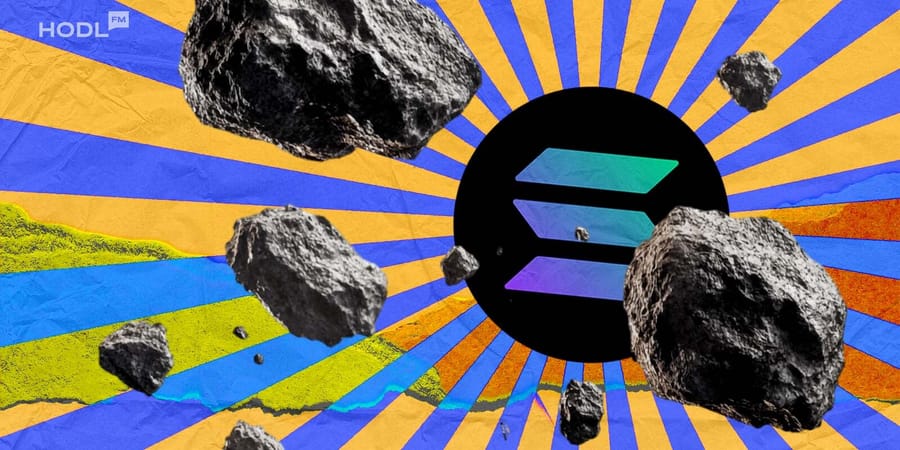The Solana ecosystem is gearing up for one of its most anticipated events of 2025, the official launch of Meteora (MET) on October 23, according to the Meteora TGE website. Following months of speculation, the project has confirmed both its airdrop and token listing date, marking what could be a defining moment for decentralized finance (DeFi) on Solana.
Meteora isn’t just the latest token launch, it’s a bold experiment in liquidity, transparency, and fair distribution. Built by the team behind Jupiter, Solana’s leading decentralized exchange (DEX) aggregator, the project aims to deliver a sustainable financial engine for the fast-growing ecosystem. Its Token Generation Event (TGE) is already being described as the most unconventional in Solana history, with half of the total supply entering circulation at launch.
A community-first, fully unlocked airdrop
On October 23, Meteora will airdrop MET tokens to its early adopters, liquidity providers, and ecosystem partners. Eligible participants include Mercurial Finance stakeholders, Meteora ecosystem users, Jupiter (JUP) stakers, and partner launchpad contributors. What makes this airdrop unusual is that it’s fully unlocked, recipients will have immediate access to their tokens, with no vesting or time locks.
The decision underscores Meteora’s philosophy of putting community control above restrictive tokenomics. As the team explained, this “fully transparent liquidity generation event” gives real users ownership from day one, eliminating the artificial scarcity that often plagues DeFi launches.
Users can either hold their tokens or deploy them into Meteora’s Dynamic Liquidity Market Maker (DLMM) and Dynamic Vaults, automated systems that optimize yields and maintain Deep liquidity across Solana trading pairs. By rewarding active participation rather than passive speculation, Meteora aims to shift the incentives in DeFi toward sustainability.
Inside Meteora’s controversial 48% circulating supply
What’s sparking the most debate around Meteora’s launch is its radical token release model. Out of one billion total MET tokens, 480 million (48%) will enter circulation immediately. In contrast, 52% will remain locked for long-term ecosystem growth and team development, vesting linearly over six years.
Polymarket Warzone: Will Meteora Break the $1B FDV Barrier?
— AshenSoul (@0xashensoul) October 21, 2025
Lets speak about Meteora TGE. $MET TGE on October 23 unlocks 480 million MET (48% of total supply) immediately into circulation.
Pre-market trading on Whales Market/MEXC has settled around ~ $0.9 - $1B (very low… pic.twitter.com/R20ZwRFPC7
The immediate circulating allocation breaks down as follows:
- 20% for legacy Mercurial stakeholders
- 15% for active Meteora users and airdrop participants
- 3% for Jupiter stakers
- 3% for launchpads and market makers
- 2% for community contributors
- 2% for M3M3 community participants
Team and ecosystem allocations make up the remaining portion, both subject to a six-year linear vesting schedule.
The “Liquidity Distributor” mechanism, Meteora’s key innovation, will also distribute part of the token supply through active liquidity positions, meaning users earn rewards directly through trading activities rather than passive holding. This feature supports continuous liquidity depth and aligns the interests of liquidity providers, traders, and the protocol itself.
The FTX legacy and rebirth through transparency
Meteora’s story is rooted in the ashes of Mercurial Finance, a Solana-based stable-asset platform that collapsed in the aftermath of the FTX fiasco in late 2022. Much of Mercurial’s liquidity was tied up in FTX, leaving the project crippled. Rather than abandoning ship, the team, led by co-founders Ben Chow, Siong, and Meow, decided to rebuild from scratch.
In February 2023, Meteora emerged as that second chance, not only as a rebrand but as a philosophical reset toward fairness and transparency. The MET airdrop includes allocations for former MER token holders, symbolizing a shared effort to make amends and move forward.
Market outlook: Uncertainty meets optimism
As of October 22, betting markets already show intense speculation surrounding Meteora’s fully diluted valuation (FDV). Data from Polymarket suggests traders expect a valuation between $750 million and $1 billion within 24 hours of launch. There’s a 98% probability that FDV will exceed $500 million and a 53% chance it will surpass $1 billion, a testament to the market’s confidence in the project’s fundamentals.
Meteora currently commands around 26% of Solana’s DEX market share, processing roughly $3.9 million in daily fees, eight times higher than Raydium. Its total value locked (TVL) exceeds $829 million, ranking it among the ecosystem’s largest liquidity providers.
Despite strong performance, analysts warn that the 48% liquid supply could trigger significant price volatility in the token’s early days. Scenarios range from rapid price discovery and bullish stabilization to sharp profit-taking by airdrop recipients.
The road ahead: Historic experiment or cautionary tale?
As Solana’s DeFi community watches closely, October 23 could become a turning point in how projects approach token distribution. If Meteora’s fully unlocked launch succeeds, it may redefine “fair launch” dynamics across the crypto space, inspiring others to prioritize market-driven liquidity over artificial scarcity.
But if the market falters under immediate selling pressure, it may serve as a stark reminder of why vesting schedules exist. Either way, Meteora’s MET TGE stands as one of 2025’s most consequential experiments in decentralized finance, a test of whether radical transparency and community-first principles can build a more resilient DeFi ecosystem.

Disclaimer: All materials on this site are for informational purposes only. None of the material should be interpreted as investment advice. Please note that despite the nature of much of the material created and hosted on this website, HODL FM is not a financial reference resource, and the opinions of authors and other contributors are their own and should not be taken as financial advice. If you require advice. HODL FM strongly recommends contacting a qualified industry professional.





